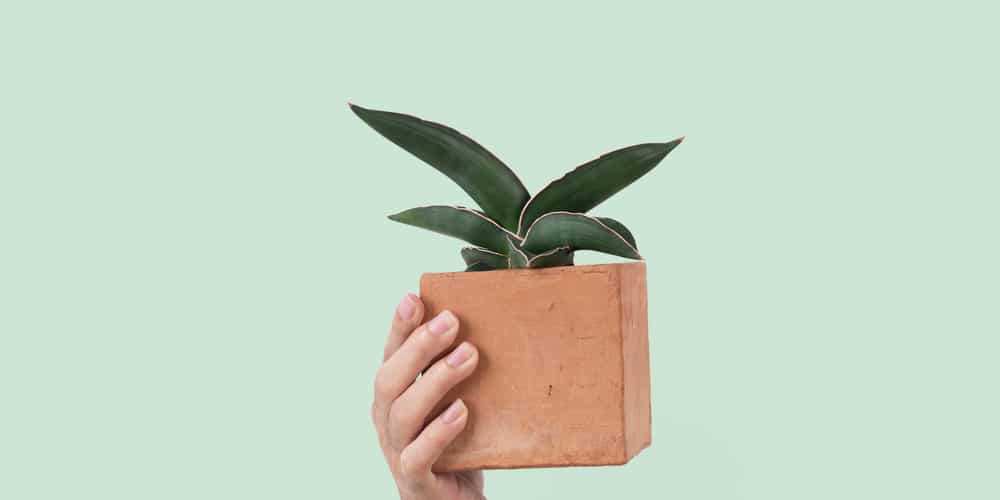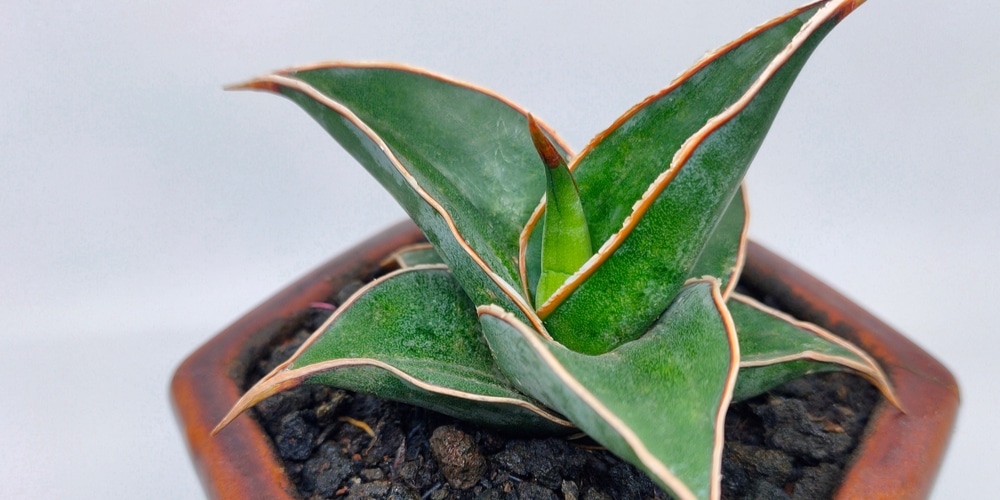When it comes to Sansevieria varieties, the options are seemingly endless. And with so many to choose from, it can be tough to decide which one is right for you. But if you feel like taking care of one of its smaller varieties, then the Sansevieria Samurai should be at the top of your list.
This plant is perfect for those who want something low-maintenance, easy to care for, and can thrive in various environments. And with its unique leaves that resemble a samurai sword, it can quickly turn a simple desk or windowsill into a conversation starter.
If you’re thinking about adding a Sansevieria Samurai to your collection, then read on for everything you need to know about its care.

| Botanical Name | Sansevieria Ehrenbergii |
| Common Name | Samurai Dwarf |
| Plant Type | Perennial |
| Flower Color | Greyish-white flowers |
| Size When Mature | 4-6 inches |
| Bloom Time | Summer |
| Sun Requirements | Example: Full to Partial Sun |
| USDA Hardiness Zones | 10 |
| Soil PH Range | 5.0 – 7.5 |
| Soil Type | Well-draining, sandy soil |
| Water Needs | Low |
| Native Area | Africa, Asia |
What You Need to Know About Sansevieria Samurai
Among the dwarf varieties of Sansevieria, the Sansevieria Samurai is one of the smallest. It typically grows to be about 4-8 inches tall, with leaves around 2-3 inches wide.
This plant is native to West Africa and some parts of Asia, where it grows in sandy or stony soils. And while it’s used to growing in arid conditions, it can also tolerate humid environments quite well.
Popularized over the years, especially when COVID-19 first hit, the Samurai has made its way into households worldwide as a trendy houseplant. They’re welcomed by beginner and experienced plant parents alike for their easy-to-care-for nature and their air-purifying qualities.
The Sansevieria Samurai’s leaves are what make it such a standout plant. They’re long, thin, and have a sharp point at the end – giving them the look of a miniature samurai sword. And while they’re typically green with some yellow striping, some varieties have more variegated leaves with hints of cream, white, and even pink.
Rarely, this plant flowers during the summer, producing small, grayish-white flowers that grow on tall stalks. But for the most part, it’s grown and appreciated for its striking leaves.
How to Care for Sansevieria Samurai
When it comes to its care, the Sansevieria Samurai is a very forgiving and incredibly tough plant. It’s drought-tolerant and can go for several weeks without being watered. This plant is slow-growing, so don’t expect it to fill out your space overnight. But its small size makes it perfect for those who don’t have a lot of room to spare.
Here’s everything you need to know about growing and caring for a thriving Sansevieria Samurai plant of your own:
Light
One of the best things about the Sansevieria Samurai is that it does well in a variety of lighting conditions. It can tolerate low light, but it also does well in bright, indirect sunlight. Placing them in either north, south, or east-facing windows is usually a good bet.
If you notice that the leaves start to turn yellow or lose their variegation, that’s usually a sign that it’s getting too much direct sunlight. In this case, try moving it to a spot with indirect light or filtered light instead.
Water and Soil Needs
As a member of the succulent family, the Sansevieria Samurai doesn’t need a lot of water to survive. In fact, it’s much more tolerant of drought than it is of overwatering.
Watering once every 2 weeks usually does the trick. It doesn’t need a lot of water to thrive, but make sure the soil is completely dry before you water it again.
When it comes to its soil needs, the Sansevieria Samurai prefers well-draining soil that’s sandy or loamy. A cactus mix or succulent mix are both good choices. If you’re potting it yourself, you may also want to add some perlite or pumice to help with drainage.
Of course, it can thrive in a wide range of soil pH levels, so you don’t need to worry about being too precise. It does best from 5.0 – 7.5, but it can tolerate levels as low as 4.5 or as high as 8.0.
Temperature Requirements
Because it’s native to warmer climates, the Sansevieria Samurai prefers temperatures that are on the hotter side. A 50% – 70% humidity level is ideal, but it can also tolerate lower humidity levels quite well.
During the winter months, the Sansevieria Samurai can tolerate cooler temperatures as long as they don’t drop below 40 degrees Fahrenheit. Hardy in USDA zone 10, taking the plant indoors when temperatures start to dip is usually a good idea.
Fertilizer
Fertilizing is optional, but if you decide to do it, use a well-balanced fertilizer or one that’s particularly made for succulents once a year in the spring. A diluted liquid fertilizer is usually a good choice.
Common Diseases
The Sansevieria Samurai is a pretty tough plant, so it doesn’t often succumb to diseases or pests. If you do notice any problems, they’re usually due to overwatering or poor drainage.
Root rot is fairly common, and it only happens when overwatered. This can be easily prevented by letting the soil dry out completely between watering.
Pests are also not a big problem for this plant, although mealybugs and spider mites can sometimes be an issue. If you notice any pests, you can usually get rid of them by taking them out by hand or spraying them with a mixture of water and dish soap.
Sansevieria Samurai Propagation
If you’re looking to propagate your Sansevieria Samurai, the best way to do it is by division. You can also propagate from leaf cuttings, but this method is less reliable.
Simply divide your plant, starting at the rootball. Shake off any excess dirt, and carefully divide from its roots. Careful not to damage the roots too much.
Once you’ve divided your plant, pot it up in well-draining soil and water it lightly. Place it in a spot with bright, indirect light and let it be. Allow the plant to dry and get used to its new environment for a few days before watering it again.
From there, water as usual, and your plant should start to grow in no time.
Related Article: 10 Great Plants For an Office With No Windows

